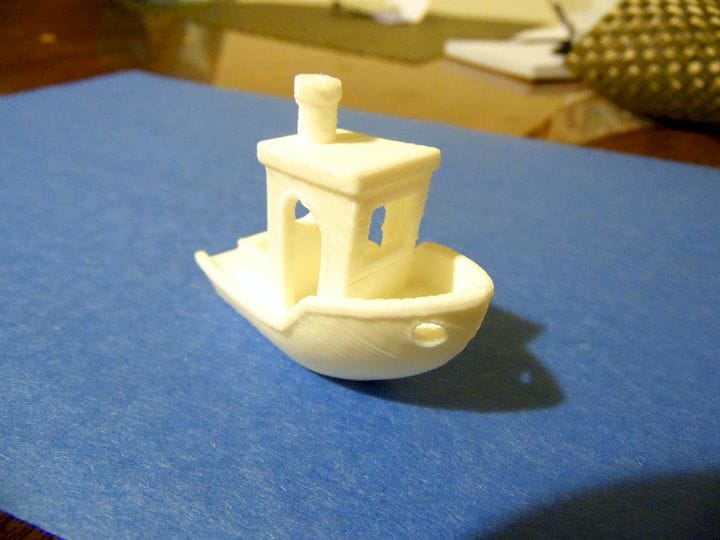![#3DBenchy produced on the PowerBelt3D Zero belt-driven 3D printer [Source: PowerBelt3D]](https://fabbaloo.com/wp-content/uploads/2020/05/image-asset_img_5eb091bf87d9e.jpg)
We’ve obtained some exclusive images of prints from the PowerBelt3D Zero 3D printer.
Earlier this week we published a story on the new startup company that’s marketing a very unusual 3D printer, the PowerBelt3D Zero. It’s a belt-driven 3D printer that has some interesting capabilities.
Belt-driven 3D printers involve tipping the extrusion system to an angle, 35 degrees in the case of the PowerBelt3D Zero device, and printing layers at an angle instead of flat on the build platform.
This is possible because with extrusion 3D printing it is feasible to 3D print slight overhangs. Once you’re printing in this orientation, the belt system acts as a conveyor belt to move the model forward slightly to create each new layer. Eventually when the print is complete the belt carries the print to the end of the belt, where it peels off and lands (hopefully) in a catch basket.
![The PowerBelt3D Zero belt-driven 3D printer [Source: PowerBelt3D]](https://fabbaloo.com/wp-content/uploads/2020/05/image-asset_img_5eb091bfe0d0b.jpg)
There are a very few belt-driven 3D printers available today. Actually, there are two you can purchase: BlackBelt at around US$10K, and the White Knight 3D printer kit at US$2K. The PowerBelt3D Zero kit is priced at an astounding US$399, far lower than the other options.
With that low price, social media observers are a bit skeptical. Some comments we saw:
Thomas Lamourine says:
“yaaaa . couple issues, they state it’s Core XY belts, and it’s most certainly not! also NOT direct drive! does look cool generally thou!”
Gareth says:
“Jankiest looking printer design i have seen in a long time 😁”
MurphySlawJackPads says:
“Why such a thin belt?”
There will always be questions about a new product that’s clearly undergone design for low cost, but the truth will be told in how the device actually performs and whether the company can deliver and support product once ordered.
In the meantime we’ve obtained some exclusive images of sample prints from the PowerBelt3D Zero, with one at top. Note specifically the angle of the layer lines, demonstrating that it was indeed 3D printed on a belt-driven device.
![Sample 3D prints produced on the PowerBelt3D Zero belt-driven 3D printer [Source: PowerBelt3D]](https://fabbaloo.com/wp-content/uploads/2020/05/image-asset_img_5eb091c03cc92.jpg)
Here are some additional sample prints. While I would not call these prints of exceptional quality by any measure, they did complete, which is more than a lot of 3D printers I’ve been fiddling with lately.
It’s not clear why the prints were not of the highest quality, but it could be due to the differences in component quality used to achieve the low purchase price. It’s also possible that the belt is not sufficiently tight — I had this problem in spades years ago when testing the MakerBot Automated Build Platform, which worked reasonably well until the belt stretched after repeated heating.
Meanwhile, the PowerBelt3D Zero is still available at only US$399. That’s not too high a price to try out the machine.
Via PowerBelt3D









